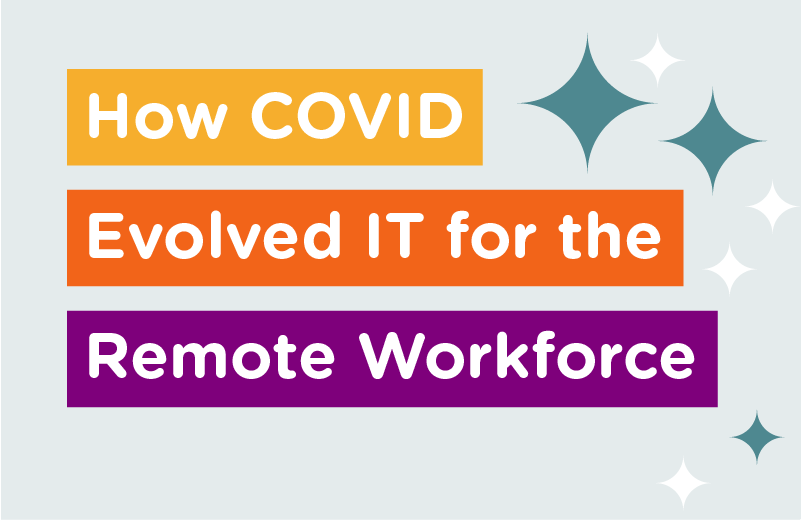
COVID has evolved IT for the remote workforce. Beginning in March, the country was faced with the need to change their 9-5 office jobs and go remote. Whether your company was ready or not, companies were forced to find a way to make their workforce remote with the tools they had. Or, quickly implement new tools to help with the transition. Not only did this include accessing company data, but also lines of communication, personal management, meetings (both internet and external), as well as training. This wasn’t just something your BDR (backup disaster recovery) plan would address. For most, it was a complete shift in company culture.
Beyond VPN
Before COVID, the idea of remote work meant VPN’s and remote desktop services to grant outside user access to internal resources, such as the server for file shares. But, what happens when you have nearly 100% of your workforce that now requires a VPN? Maxed VPN users, licensing on security devices, bandwidth restraints—this all comes into question on how reliable those connections will be.
For those who have not caught on to cloud technologies, it quickly became the main point of discussion on how it can be leveraged to keep their business operating seamlessly. We aren’t just talking about AWS, Azure, and the big players that you think of when someone mentions cloud. This also means eFax services, phone systems, task management, video conferencing—all the things that allow you to collaborate as a group, but remain in the comfort of your home. Here we saw the surge in apps like Zoom, Trello, Todoist, Harvest, and all the Office 365 goodies that come bundled in the subscriptions.
Remote Work Equals Security Concerns
For your IT staff, it didn’t just mean deploying these new solutions. It also meant doing so while trying to keep machines/user’s secure and policies enforced. A remote workforce equals new security concerns. The user has left a fortress that was secured with appliances, group/domain policies, and monitoring agents and entered the wild. Home users are surrounded by unprotected devices on the same network including other computers, IoT devices like your smart TV, thermostat, etc. This quickly led to the higher adoption of next-gen security products like EDR (Endpoint Detection and Response), Intune and device management, remote monitoring, and remote access tools. All of which keep an eye on devices while maintaining security policy while out of the office.
It’s been fascinating to sit back and watch companies evolve to this “new normal” and I must admit it’s been fun to help our clients embrace these technologies to help with the transition.
We love to hear stories of how companies adapt during these changes. How has COVID evolved IT at your company? How are you monitoring and managing these new security risks?




